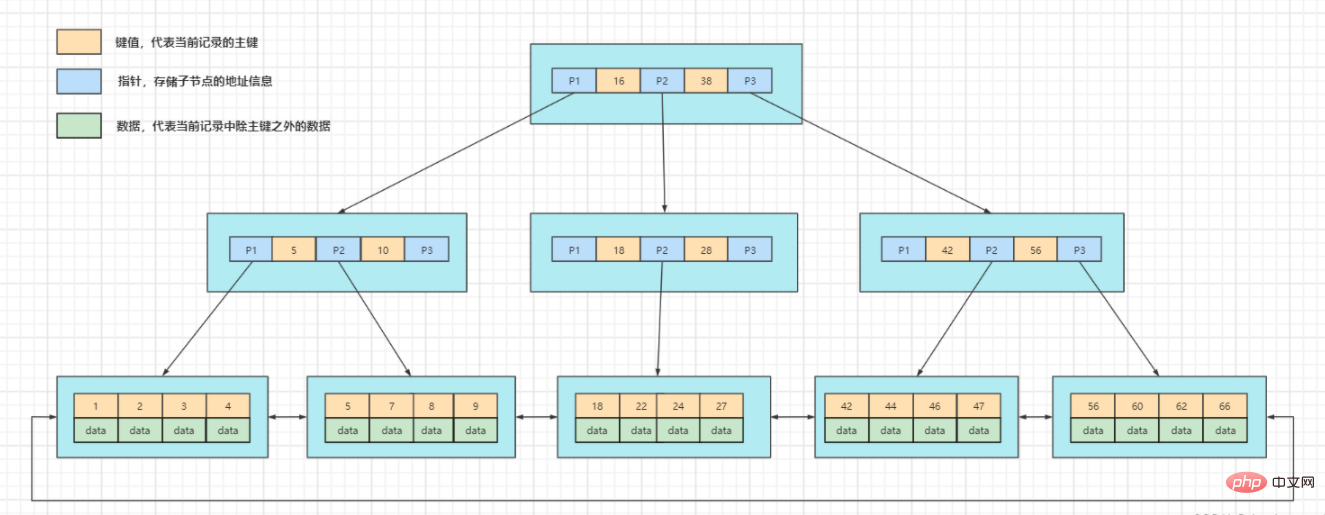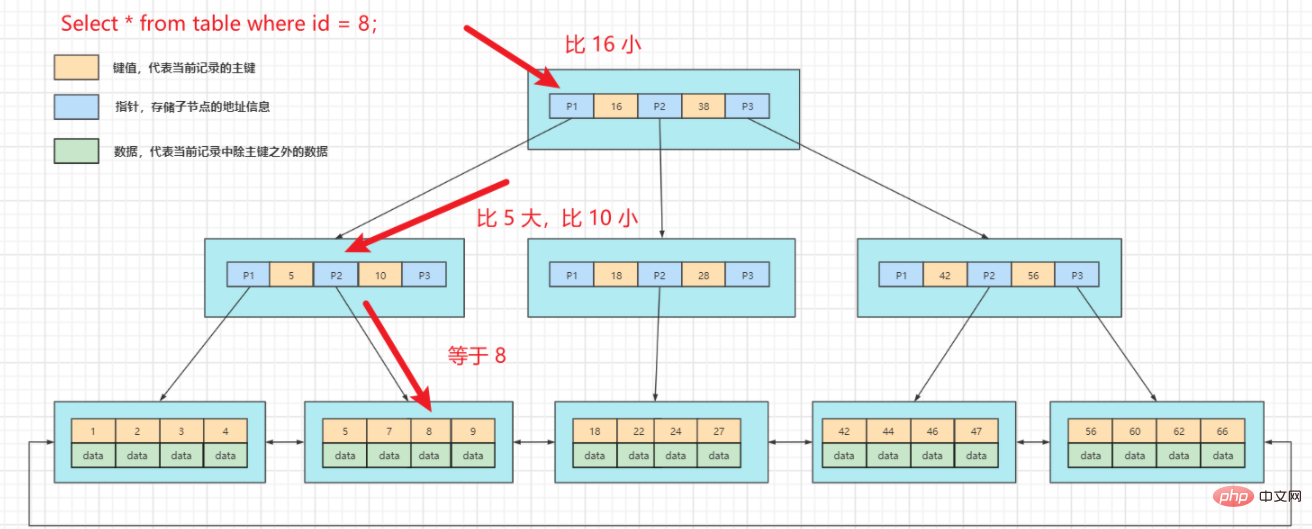
mysql has an index. There are usually two ways to access the row data of a database table in MySQL: 1. Sequential access, that is, performing a full table scan in the table and traversing it row by row from beginning to end until the target data that meets the conditions is found in the unordered row data; 2. Index access is to directly access the record rows in the table by traversing the index. The data structure of MySQL index can be divided into two types: BTree and Hash, and BTree can be divided into BTree and B Tree.

The operating environment of this tutorial: windows7 system, mysql8 version, Dell G3 computer.
What is a MySQL index?
Index is a special database structure, which is composed of one or more columns in the data table. It can be used to quickly query records with a specific value in the data table. This section will explain in detail the meaning, function, advantages and disadvantages of indexes.
Through the index, when querying data, you do not need to read all the information in the record, but only query the index column. Otherwise, the database system will read all information of each record for matching.
The index can be compared to the phonetic sequence of the Xinhua Dictionary. For example, if you want to look up the word "ku", if you don't use phonetic sequence, you need to find it page by page in the 400 pages of the dictionary. However, if you extract the pinyin to form a phonetic sequence, you only need to look it up directly from the phonetic table of more than 10 pages. This can save a lot of time.
Therefore, using indexes can greatly improve the query speed of the database and effectively improve the performance of the database system.
Why use indexes
The index is the relationship between the column values and the record rows established in a certain order based on one or several columns in the table. The correspondence table is essentially an ordered table describing the one-to-one correspondence between the column values of the index columns and the record rows in the original table.
Index is a very important database object in MySQL and is the basis of database performance tuning technology. It is often used to achieve fast retrieval of data.
In MySQL, there are usually two ways to access row data of a database table:
1) Sequential access
Sequential access is in the table Perform a full table scan, traversing row by row from beginning to end until you find target data that meets the conditions in the unordered row data.
Sequential access is relatively simple to implement, but when there is a large amount of data in the table, the efficiency is very low. For example, when searching for a small amount of data among tens of millions of data, using sequential access will traverse all the data, which will take a lot of time and will obviously affect the processing performance of the database.
2) Index access
Index access is a way to directly access record rows in the table by traversing the index.
The premise of using this method is to create an index on the table. After creating the index on the column, when searching for data, you can directly find the location of the corresponding record row based on the index on the column, so as to quickly find the data. The index stores pointers to the data values of the specified columns, sorting these pointers according to the specified sort order.
For example, in the student basic information table tb_students, if an index is established based on student_id, the system will create a mapping table from the index column to the actual record. When the user needs to find the data with student_id 12022, the system first finds the record on the student_id index, then directly finds the data row through the mapping table, and returns the row of data. Because the speed of scanning indexes is generally much greater than the speed of scanning actual data rows, using indexes can greatly improve the efficiency of the database.
In short, without using an index, MySQL must read the entire table starting from the first record until the relevant rows are found. The larger the table, the more time it takes to query the data. If the queried column in the table has an index, MySQL can quickly get to a location to search the data file without having to look at all the data, which will save a lot of time.
Classification of MYSQL indexes
1. Ordinary index and unique index
Ordinary index: The basic index type in MySQL, allowing duplicate values and null values to be inserted into the column that defines the index
Unique index: The value of the index column must be unique, but null values are allowed
2. Single-column index and combined index
3. Full-text index
4, spatial indexes
Spatial index is an index established for fields of spatial data type
There are 4 types of spatial data types in MySQL, namely Geometry, Point, and Linestring. And Polygon
MySQL is extended using the Spatial keyword, allowing you to create a spatial index using a syntax similar to creating a regular index
Create a spatial index Column does not allow null values and can only be created in MyISAM tables.
5. Prefix index
MySQL index data structure
The data structure of MySQL index can be divided into two types: BTree and Hash, and BTree can be divided into BTree and B-Tree.
Hash: Use Hash table to store data, Key stores index columns, and Value stores row records or row disk addresses.
Hash only supports equal value queries ("=", "IN", "") and does not support any range queries (the reason is that there is no connection between each key of Hash) , Hash query efficiency is very high, and the time complexity is O(1).
BTree: Belongs to a multi-tree, also known as a multi-way balanced search tree.
Properties:
B Tree: On the basis of BTree, perform BTree Optimized: only leaf nodes will store key value-data, non-leaf nodes only store key values and addresses of child nodes; leaf nodes are connected using bidirectional pointers to form a bidirectional ordered linked list.


mysql video tutorial]
The above is the detailed content of Does mysql have indexes?. For more information, please follow other related articles on the PHP Chinese website!